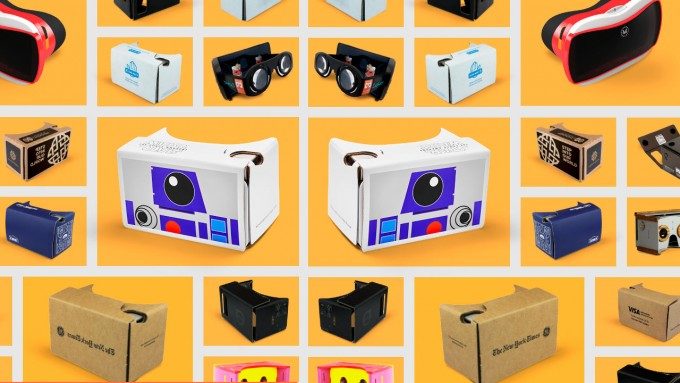Google’s annual I/O conference kicks off tomorrow and we’re expecting VR to be a major part of the event. Here’s a look at everything we know and what we expect to see from Google’s virtual reality initiatives.
Android N Bakes in VR
Android was built as an operating system for more phones, not for VR headsets. The latency between input and response that’s acceptable for tapping and swiping is far removed from the sub-20ms threshold required for a great VR experience. Keeping latency low between a user’s head movement and the corresponding movement on the headset’s display is absolutely critical.

One of the biggest reasons why Samsung’s Gear VR provides a much better Android-based VR experience than even Google’s current Android-based Cardboard VR offering is that Samsung and Oculus have created custom Android firmware for Gear VR-compatible Samsung phones which is specifically tuned for virtual reality. This custom firmware allows Gear VR to cut through Android’s inherent latency in several important technical ways, such as Asynchronous Time Warp rendering.
Today, standard builds of Android lack such VR-specific features, but the next version (Android N) is likely to be the first that’s tuned for VR performance. References to a ‘virtual reality mode’ have already been spotted in early builds of the new software, and we’re expecting to hear much more about about Android N’s VR-specific features at I/O 2016. Ultimately, we expect that Android N will bring the default Android software stack up to par with where Gear VR is today (hardware withstanding).
Android VR as an Ecosystem
Mentions of an ‘Android VR’ plugin in Unreal Engine development documentation surfaced recently, raising questions about whether or not it has anything to do with Google’s VR initiatives.
I believe the answer is yes, but I’m putting my money on the term simply being the next step after Google’s Cardboard initiative (rather than referencing an individual headset/product).
As it stands now, Cardboard is precisely that: an ecosystem descriptor. It describes a class of ‘dumb’ VR viewers (which do nothing more than hold your smartphone in front of some lenses), and the software ecosystem that goes with them (both the tools and the apps that are made for Cardboard).
Android VR as a term is likely to encompass both the new VR-specific software features of Android N along with a new class of VR viewer headsets and apps which go beyond Cardboard’s current capabilities.
No All-in-one Headset
While some have speculated that the rumored ‘Android VR’ is an all-in-one headset being developed by Google, I don’t see Google taking such an approach (at least not at I/O 2016). It simply doesn’t make sense from a strategic standpoint.
As the facilitator of Android, Google’s goal is to help its hardware partners sell phones. Android’s biggest competitor is iOS and Apple; the end goal of anything Google does with Android is to increase Android’s marketshare over iOS, not to steal marketshare from its hardware partners that fuel the successful Android ecosystem.
Creating an open ecosystem of smartphone-based peripheral headsets (as they’ve done with Cardboard) is the exact same successful strategy Google used for smartphones: supply the software (and occasionally, hardware reference designs) and let hardware partners furnish the hardware side with many competing choices for customers. Opening the door to allow any of their partners to create smartphone-based Android VR headsets (rather than Google creating their own an all-in-one) encourages the key objective of selling more Android phones across the ecosystem.
Look at it this way: if Android has great VR and iOS has no VR, it’s going to be a huge opportunity for Google to lure iOS users to Android (such opportunities don’t come around that often, so Google is going to want to push this hard). Selling an all-in-one headset wouldn’t encourage an Apple customer to join the Android smartphone ecosystem (because they could then get the Android VR experience without converting to an Android smartphone). Making the smartphone the key to Android’s VR experience gives customers a major reason to switch to an Android smartphone and serves Google’s key objective of helping hardware partners to sell phones (and soon, headsets).









